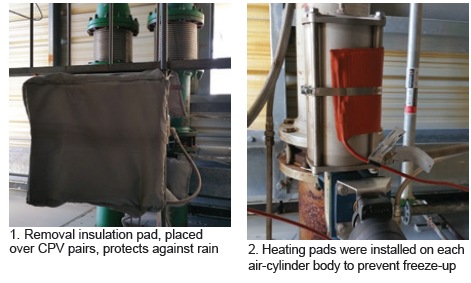Plant Rowan, owned by Southern Company and operated by Southern Power, is a 985-MW generating complex in Salisbury, NC, that has a 2 × 1 combined cycle and three simple-cycle units. Plant manager is Chris Lane.
Plant personnel identify, eliminate causes of compressor bleed valve failures
Plant Rowan’s 7F compressor bleed valve (CBV) design—consisting of a vented-to-atmosphere, air-to-close/spring-to-open air-actuated butterfly—lends itself to unpredictable failures at the worst possible times. Following numerous failures and subsequent replacements plant personnel took it upon themselves to tear down and perform a “workbench RCA” on a failed CBV following what was a very frustrating winter morning.
The conclusions were simple: Moisture was the leading contributor to failures, but on multiple fronts. It wasn’t simply a corrosion issue, nor only a freezing issue during winter operations. Rather, any moisture drawn through the air cylinder vent plug would linger causing possible issues year-round.
Trapped moisture accounted for nearly 90% of the failures experienced at various times throughout the year. The remaining issues were simple wiring gremlins. Those were resolved easily by refreshing flexible conduit runs and fittings as well as instituting annual wire-terminal checks.
Moisture issues were resolved thusly: First, plant had a removable insulation pad “hut” fabricated and placed over the CBV pairs (Fig 1). This would keep rain away from the valves/actuators and limit pack assemblies. Second, and most critical, 6 × 12-in. heating pads were installed on each air-cylinder body (Fig 2). This eliminated potential freezing and helped prevent condensation formation inside the cylinder as it takes in ambient air each cycle (dewpoint control).

Success! There have been zero failed starts attributed to bleed valves “failing to actuate” in over six years. It took almost no time to realize a return on investment with this small project.
Learn more from our Best Practices Awards sponsor











